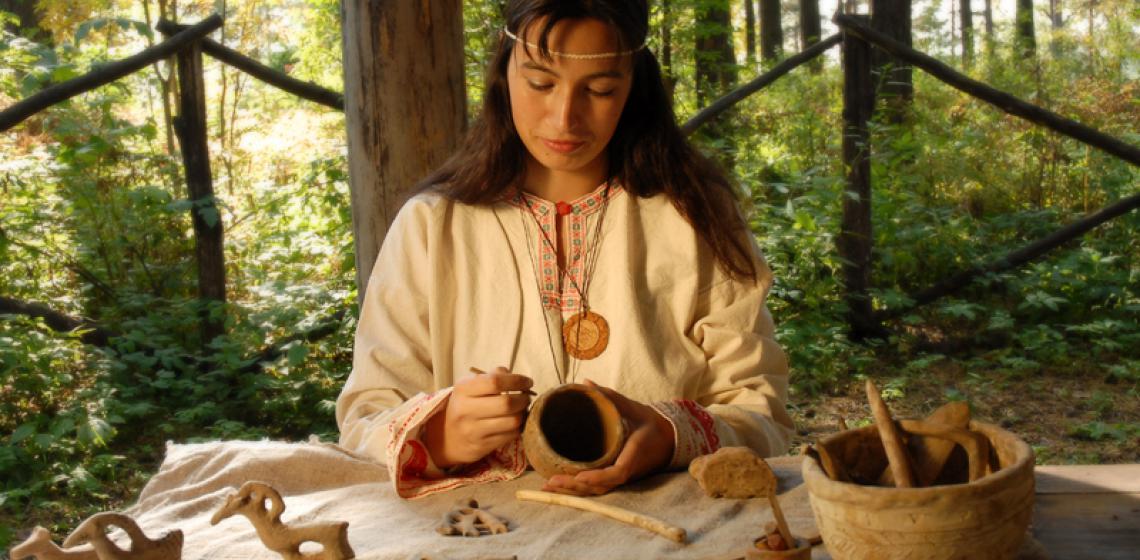
In Kemerovskaya Oblast, near the village Pisanaya you will find the Historical, Cultural and Natural Museum-preserve “Tomskaya Pisanitsa”. Its main attraction are petroglyphs and cave paintings. The exhibition “Ancient Dwellings” illustrates the housing traditions and architecture of peoples of the Central Siberia in the ancient time, from the late Stone Age (the Upper Paleolithic, about 45 - 30 thousand years BC).
This exhibition features several reconstructions of dwellings of different eras built in accordance with the archaeological researches of the ancient settlements excavations. The exhibition “Ancient dwellings” includes four dwellings.
Early Bronze Age dwelling (Samus culture)
According to the materials from the ancient settlements of the Tomsk and Novosibirsk regions, near the rivers Chulym and Ob, the Samus people lived in the communities on the forested shores of the rivers and lakes. Their dwellings were divided in light constructions such as hovels and chums (a kind of tent) for the summer and half-dugouts for wintertime.
Late Bronze Age dwelling (Irmen culture)
The population which left the monuments of the Irmen culture like camps, settlements, burial sites, rock carvings etc. appeared as a result of assimilation of the newcomers steppe herdsmen (Andronovo people) and local groups of the taiga hunters and fishers (Samus and other peoples). The Irmen people lived in large half-dugouts with area up to 250 m2. In summertime they used the light dwellings like chums or root yurts.
Early Iron Age dwelling (Tagar culture)
The population of the Tagar culture had a mixed origin, including both local tribes and the newcomers from the Central Asia steppes. The Tagar people lived in small hamlets and larger fortified settlements. Their dwellings were quadrangular timbered yurts or round felt yurts.
Medieval dwelling (Altai Turkic people)
During all their history, the traditional culture of the Turkic people remained almost unchanged. Practicing Nomadic pastoralism, the Turkic people lived in small settlements formed by kinsmen or as separate families. Their traditional dwellings were yurts of various constructions adapted for the seasonal migrations.
The exhibition “Pavilion of burials” occupies the central position in the exhibition complex “Archeodrom”. Most of the archaeological information about the prehistory times was obtained thanks to research of the burial monuments of different ages and peoples. The exhibition “Pavilion of burials” features models of the burial sites of different epochs: Neolithic Age (Kuznetsk-Altai culture), Middle Bronze Age (Andronovo culture), Late Bronze Age (Irmen culture), Scythian period (Tagar culture), Hunnic period (Tashtyk culture) and the Middle Ages (Altai Turkic burial). These models reconstruct the ancient burials of the different peoples and tribes according to archaeologists following excavations and research.
Living Archaeology.
“Archeodrom” offers an opportunity to travel back in time. The visitors can try themselves in javelin throwing, archery, try to make fire in the way our remote ancestors did. “The Living Archaeology” is the name for the ancient technologies reconstructions: metal smelting, ceramics and weaving of the Bronze Age. It is interesting for everyone to hold ancient tools in hands and try to create something with them. By being involved in these primeval activities the visitor gets open minded, feels connected with the natural environment and generously draws Siberian energy from it.
